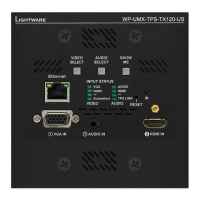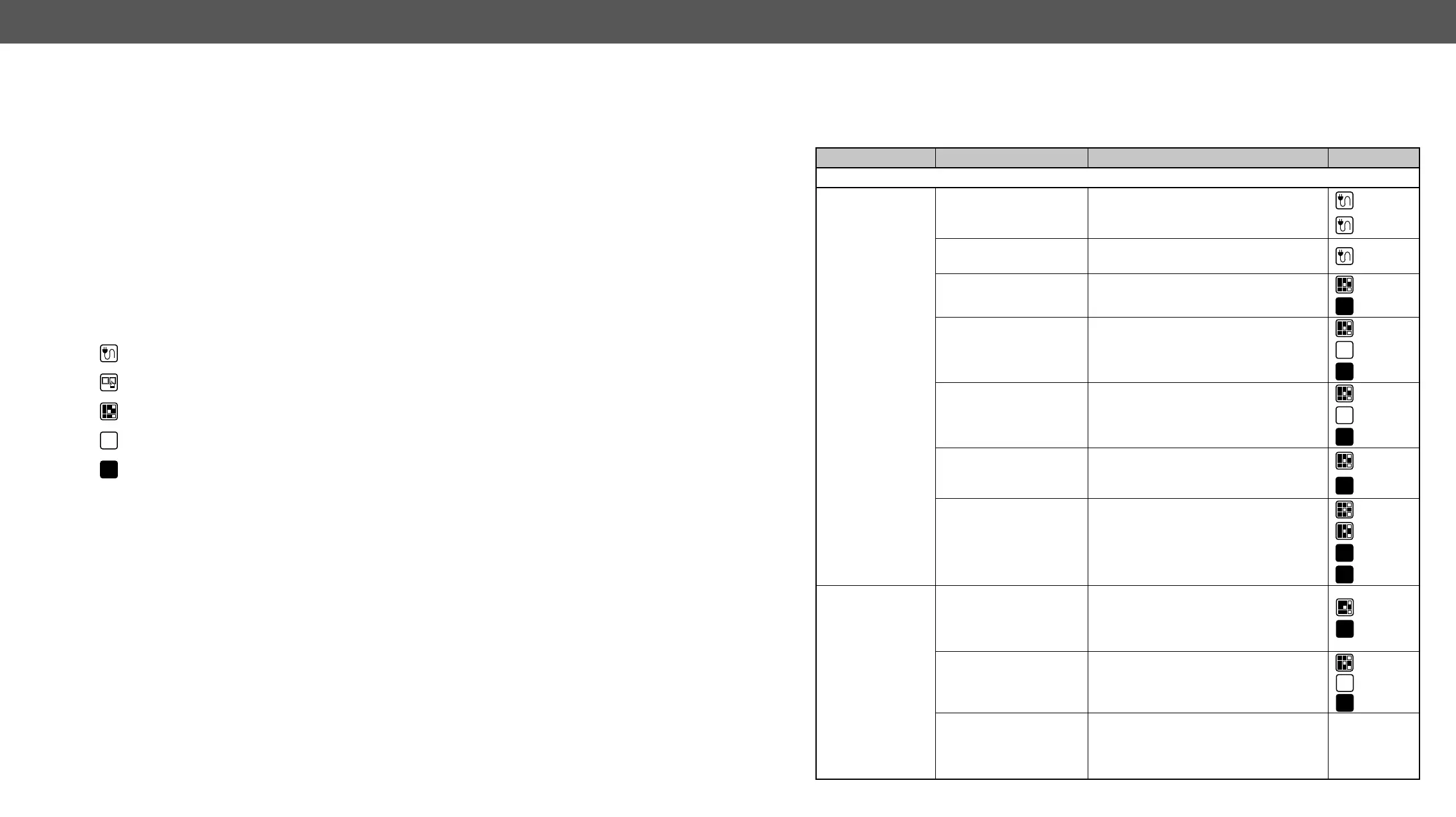9. Troubleshooting UMX-TPS-TX100 series – User's Manual 107
9
Troubleshooting
Usually, if the system seems not to transport the signal as expected, the best
strategy for troubleshooting is to check signal integrity through the whole
signal chain starting from source side and moving forward to the receiver end.
Link to front panel operation section.
Link to LDC software section.
LW3
The following sections are available in the chapter:
Use Cases
about status, LEDs refer to Front Panel LEDs and Rear Panel LEDs sections.
Symptom Root cause Action Refer to
Video signal
No picture on the
video output
Device or devices are not
powered properly
Check the extenders and the other
devices if they are properly powered; try
to unplug and reconnect them.
3.7.1
3.7.2
Cable connection
problem
connectors (video and TPS cables).
3.7
TPS mode problem Check the actual TPS mode and the
selected modes of the extenders.
5.5.4
7.4.24
The input port is muted Check the mute state of input port.
5.5
6.3.6
7.4.1
The output port is muted Check the mute state of output port.
5.5.4
6.3.6
7.4.2
Display is not able to
receive the video format
Check the emulated EDID; select another
(e.g. emulate the display’s EDID on the
input port).
5.7
7.14
HDCP is disabled Enable HDCP on the input and output
ports.
5.5.2
5.5.4
7.4.17
LW3
7.4.21
Not the desired
picture displayed
on the video
output
Video input is set to test
pattern (no sync screen)
statically
Check test pattern settings in the
properties of the input ports.
5.6.2
7.4.18
Video source is set to
Testpattern input (I6)
Check the crosspoint settings
5.4
6.3.6
7.4.3
Video output is set to
test pattern (no sync
screen) as there is no
picture on video source
Check video settings of the source.
Î
Î

